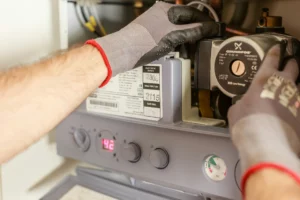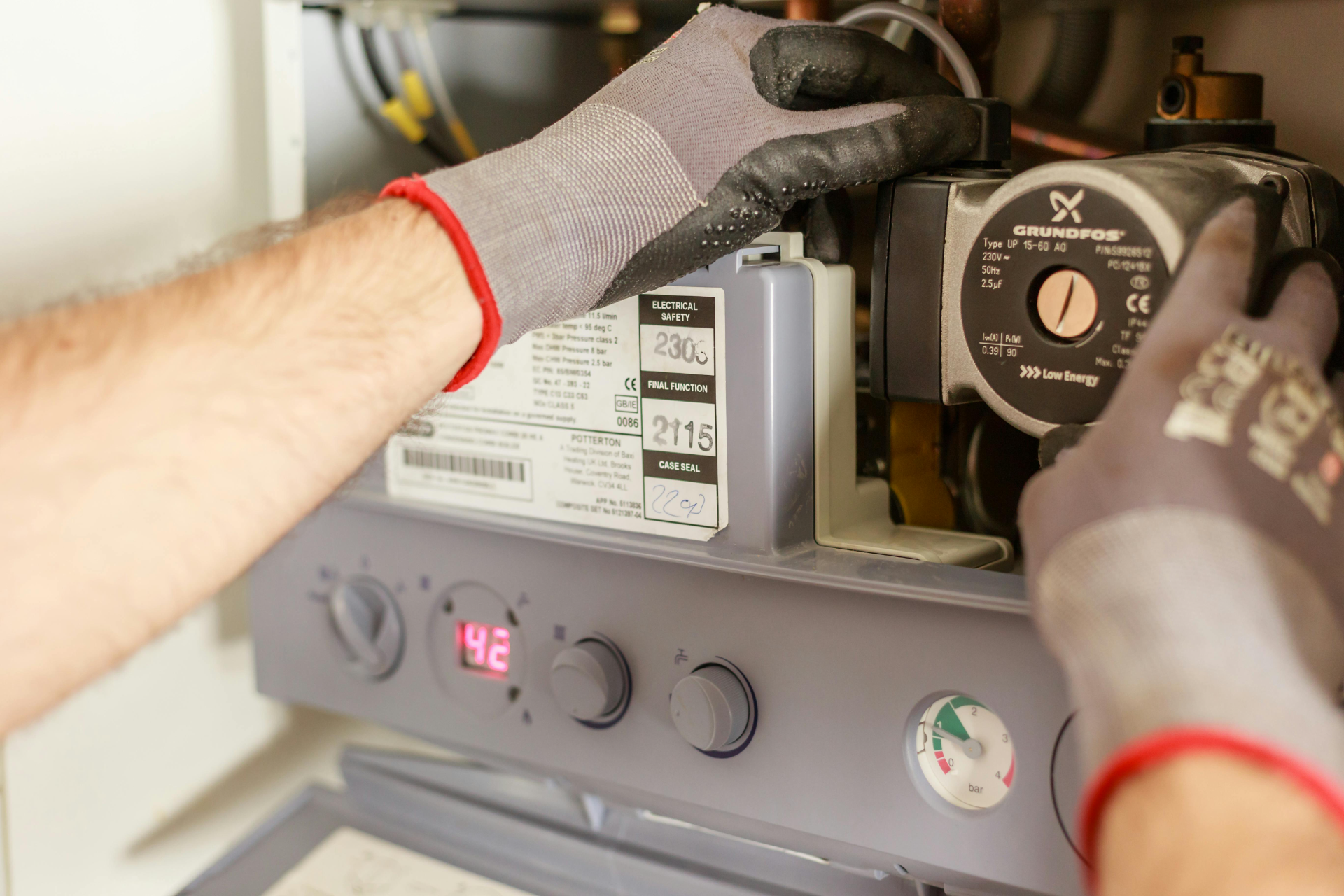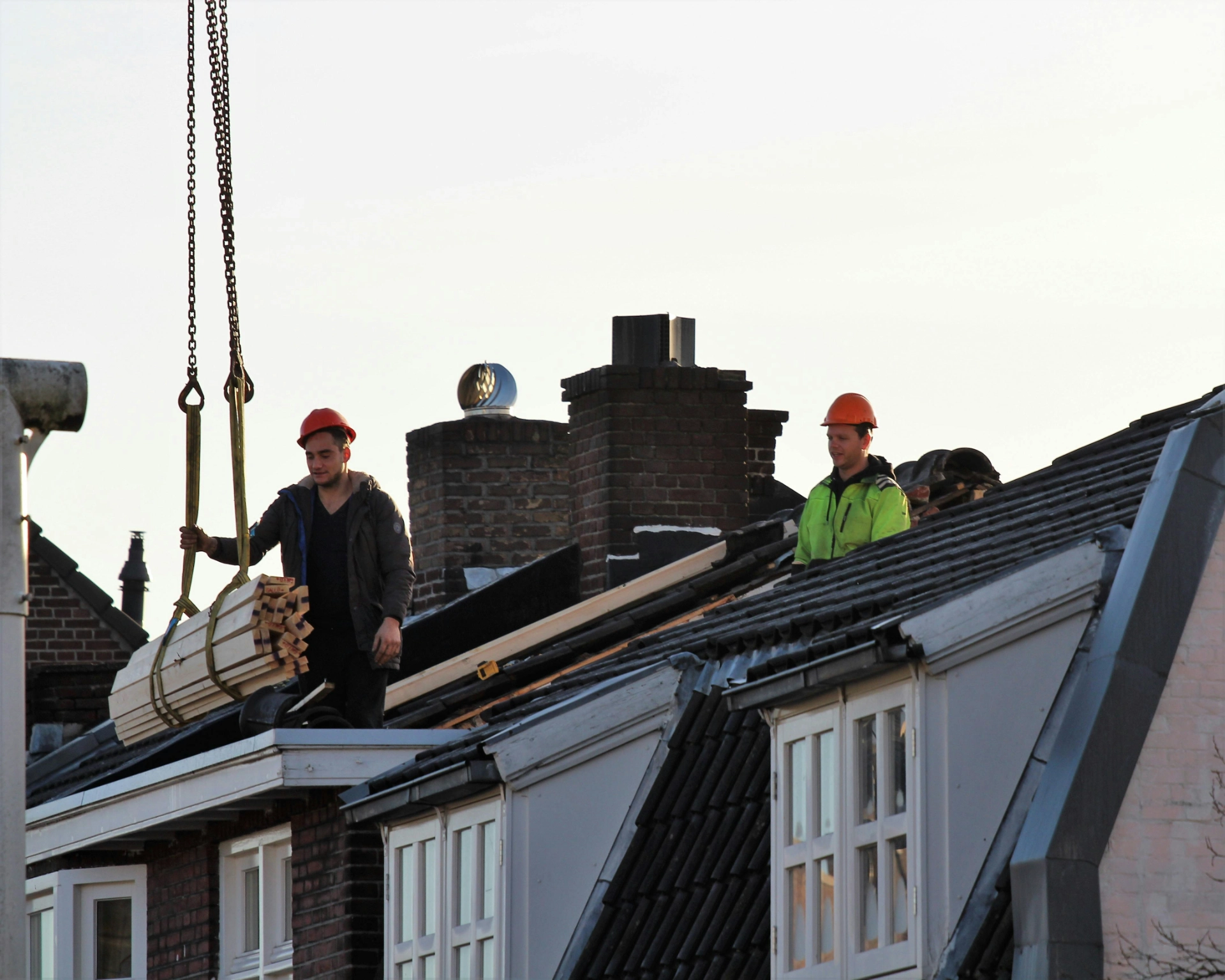Faced with the constant rise in energy prices and the climate emergency, more and more households are turning to heating solutions that are both economical, comfortable, and environmentally friendly. Among them, the heat pump stands out as an essential alternative.
Whether to replace an old heating system or for a new construction, installing a heat pump not only significantly reduces your energy bill, but also contributes to the energy transition by lowering CO₂ emissions.
Heat pumps use a renewable heat source (air, ground, or water) to produce heat and distribute it within the home through an efficient heating circuit. By harnessing free energy from the environment, they offer excellent efficiency while ensuring optimal thermal comfort.
In this article, we explain how a heat pump works, the different types available, the advantages they offer on a daily basis, and why they are a strategic choice for more sustainable housing.
How Does a Heat Pump Work?
To fully understand the benefits of this system, it is essential to know how a heat pump works. Its principle relies on a simple yet ingenious mechanism: extracting heat from the external environment (air, ground, or water) and transferring that heat into the home through a heating system.
A heat pump generally consists of three main components:
- An evaporator, which captures heat from the outside air or ground.
- A compressor, which increases the temperature of the captured heat.
- A heat exchanger (or condenser), which transfers the heat into the home’s heating circuit (radiators, underfloor heating, etc.).

Steps in the Operation of a Heat Pump:
- The heat pump draws thermal energy from the environment, even at low temperatures.
- This energy is transferred to a refrigerant fluid, which evaporates.
- The compressor increases the pressure of this gas, raising its temperature.
- This heat is then transferred inside the home through a heat distribution system.
- The gas is relaxed, cooled, and the cycle repeats.
This operation allows a heat pump to produce more thermal energy than it consumes in electricity. This is known as the heat pump’s efficiency, often expressed by the coefficient of performance (COP). For example, a COP of 4 means that the heat pump produces 4 kWh of heat for 1 kWh of electricity consumed.
In summary, a heat pump works by capturing the free heat naturally present in the air, ground, or water and converting it into effective, sustainable heating for your home.
What Are the Different Types of Heat Pumps?
There are several types of heat pumps, each suited to specific needs, home configurations, and climatic conditions. Choosing the right type of heat pump optimizes system performance and maximizes energy savings.
Air-to-Air Heat Pump
The air-to-air heat pump captures heat from the outside air and directly distributes it into the indoor air using fan convectors.
- It is easy to install and ideal for renovation.
- In addition to heating, it can also cool with a pump, making it a 2-in-1 solution.
- Air-to-air heat pumps are particularly suitable for well-insulated homes.
Air-to-Water Heat Pump
The air-to-water heat pump extracts heat from the outside air and transfers it to a central heating system (radiators, underfloor heating, etc.).
- It is a good compromise between performance and cost.
- Air-to-water heat pumps can also heat domestic hot water.
- They integrate perfectly into homes already equipped with a water-based heating system.
Geothermal Heat Pump (Ground-to-Water or Water-to-Water)
The geothermal heat pump captures heat from the ground using buried sensors.
- Highly efficient, it offers stable performance year-round.
- This type of heat pump requires more extensive work (boring or trenches).
- A ground-to-water heat pump draws heat directly from the ground and transfers it to a central heating system.
Geothermal heat pumps capture heat from the ground (or groundwater): this is known as geothermal heat. It’s a durable, quiet, and highly effective solution, but more expensive to install.
Hybrid Heat Pump
The hybrid heat pump combines an air-to-water heat pump with a traditional boiler.
- It automatically switches between the two systems depending on the weather conditions and energy tariffs.
- It ensures optimal heat production throughout the year.
- Hybrid heat pumps are often chosen for their flexibility and reliability during extremely cold periods.
Summary of Different Types of Heat Pumps
| Type of Heat Pump | Heat Source | Heat Distribution | Main Advantages |
|---|---|---|---|
| Air-to-Air | Outside Air | Indoor Air | Easy installation, heating + cooling |
| Air-to-Water | Outside Air | Radiators, Underfloor Heating | Versatile, good value for money |
| Geothermal (Ground-to-Water) | Ground or Groundwater | Radiators, Underfloor Heating | Very high efficiency, stable year-round |
| Hybrid | Air + Gas (Boiler) | Radiators, Underfloor Heating | Performance, consistent service |
Economic Advantages of a Heat Pump
Installing a heat pump represents an initial investment, but it allows for significant savings over the long term. Due to its high efficiency, this system stands out as one of the most cost-effective ways to heat a home.

Excellent Efficiency
The efficiency of a heat pump (or COP – Coefficient of Performance) measures the amount of heat produced for 1 kWh of electricity consumed.
- On average, a heat pump produces 3 to 4 kWh of heat for 1 kWh of electricity.
- This high efficiency greatly reduces the energy bill, especially compared to a conventional electric heating system.
Savings on Heating Bills
The price of a heat pump varies depending on the type of pump chosen, the size of the home, and the configuration of the system. But once installed, a heat pump allows you to:
- Cut your heating bill by 2 to 3 times compared to oil or gas heating.
- Reduce energy consumption, especially when combined with underfloor heating or good insulation.
Financial Aids and Tax Credits
To encourage households to adopt a more eco-friendly heating system, many financial aids are available:
- MaPrimeRénov’
- Energy grants
- Reduced VAT at 5.5%
- Zero-interest eco-loan (éco-PTZ)
- Local or regional aids
These aids can significantly reduce the price of a heat pump, sometimes cutting the installation cost of a heat pump by half.
Increased Property Value
By opting for a new heat pump, you improve your home’s energy performance:
- This increases its value on the real estate market.
- It’s an important asset when reselling or renting.
Conclusion: A Smart Decision for Your Comfort and Budget
Choosing a heat pump is making the decision for a high-performance, economical, and environmentally friendly heating system. Whether replacing an old boiler or equipping a new building, heat pumps adapt to all needs and housing types.
In addition to improving your thermal comfort, they allow for significant savings on your bills while contributing to the energy transition. Thanks to the many available aids, the installation of a heat pump is now more accessible than ever.
Ready to Take Action?
Don’t waste time searching for a trusted installer! Visit RenovSmart, the platform that connects you with qualified professionals near you to help with your heat pump project. Compare, choose, and install with peace of mind.
Discover RenovSmart and find the right professional for your heat pump.
Find an Installer Near You





